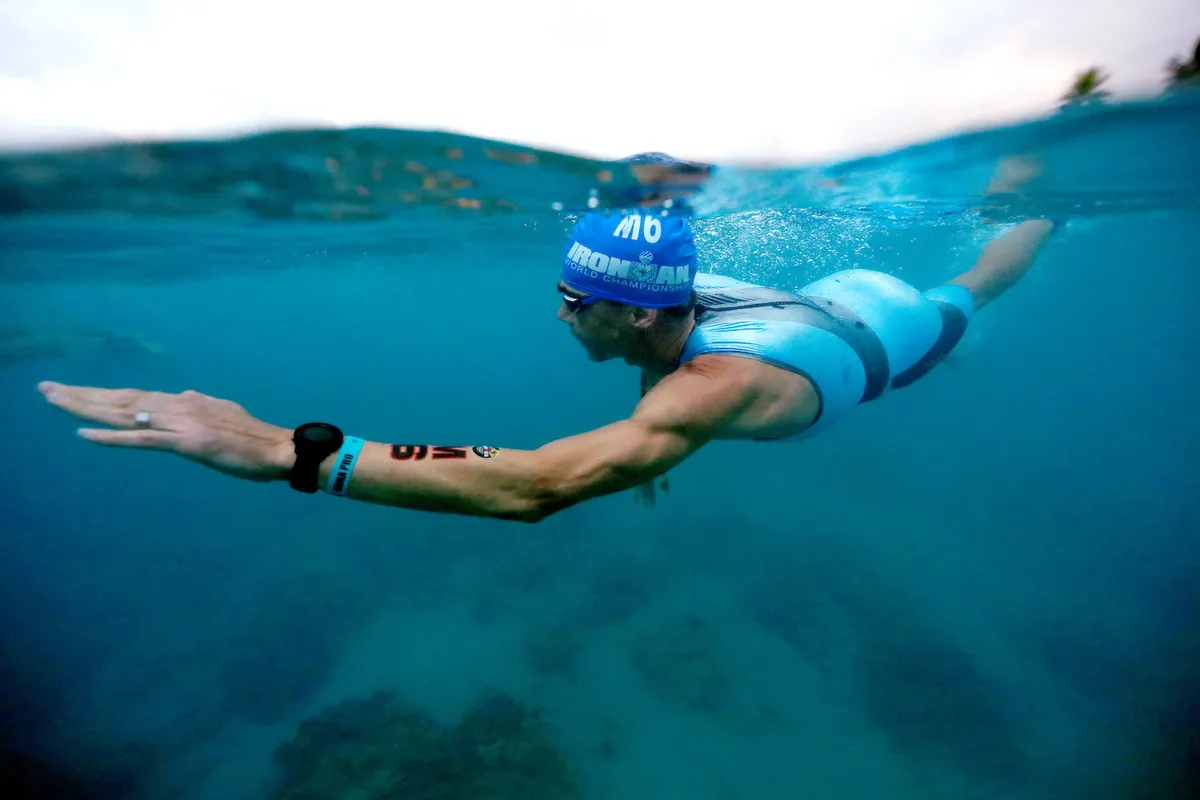Jan Sibbersen knows better than anyone how to produce a fast swim in Hawaii.
After a decade on the German national swim team and being first out of the water at the Ironman World Championship for four consecutive years from 2001, Sibbersen returned as a 43-year-old age-grouper in 2018 to set the swim course record – 46min 29sec for the 2.4 mile out-and-back course.
As founder and managing director of swim brand Sailfish, Sibbersen was joined by three-time Ironman world champion Craig Alexander to share their top tips for conquering the swim…
How to master the Kona swim
1. Check your equipment
Especially making sure your goggles are comfortable, don’t leak or fog up.
2. Check the currents
If the tide’s running out you want to be in the deeper water to the right and hug the line of the buoys.
3. Break it into segments
It’s common for the bike leg and the marathon, but less so for the swim. Start with the first half of the first half.
4. Start easy and ease in

You don’t want to build up lactate at the start of the race. The start has changed from a mass start to wave starts but everybody should still start at a steady pace. And nobody does!
5. … and I mean really easy!
For the first quarter of the race you shouldn’t feel any effort. Keep it super easy and fluid.
6. Swim straight
This is obvious advice, but if you swim 4km instead of 3.8km that’s a lot of extra time. Pick off the marker buoys one by one.
7. The swell can rise
Even if it’s a calm start, when the sun comes up over the Hawaiian mountains the wind and waves start to pick up.
8. Be careful at the turnaround

Take it safe and wide enough so you don’t hit the buoy or the boat. I’ve hit the buoy before and tangled myself in a rope.
9. Sight the antenna
When you make the turn, it can be helpful to focus on the mobile phone antenna to the right of the King Kamehameha hotel.
10. Prepare for the current
When you turn to start swimming toward home, 90% of the time the current will be against you. This is when the swim starts.
12. The return leg is a little longer
You started in the deep water and you’ll be swimming all the way back to the pier, so it’s about 150m longer on the return. If you look at your watch – and I wouldn’t recommend it – bear in mind you have a couple of minutes to add.
13. Finally, consider slowing down
If you swim just 2sec slower per 100m you’re only giving up 20sec per kilometre. It’s not a lot of time but can be the difference from swimming easy to being on the rivet. Whatever you gain from pushing too hard, too early, you’ll lose 20 times in the back half of the race.
Jan Sibbersen is the founder and managing director of premium wetsuit brand Sailfish.
Top image credit: Jason Rappaport/Ironman via Getty Images
